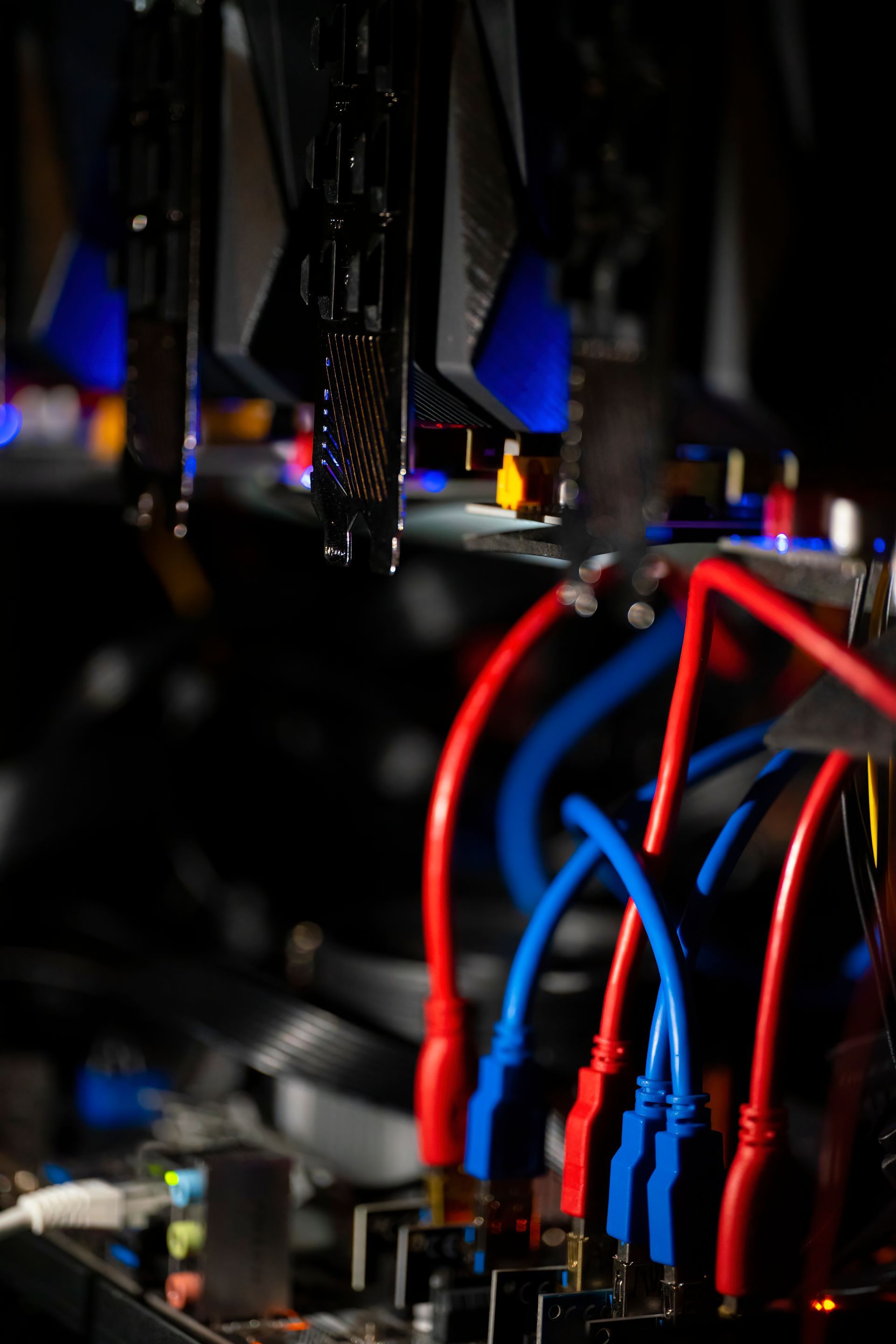The Ultimate Guide to Cable Management in Your Office
In today’s fast-paced digital environment, connectivity is the backbone of every successful business. But behind the sleek monitors and smart tech lies a complex web of wires that, if left unmanaged, can cause disruptions, safety hazards, and inefficient workflows. That’s where office data cabling and proper cable management come into play.
Whether you're setting up a new workspace or upgrading an existing one, understanding how to manage your cables—and why it matters—can make a significant difference in your daily operations. In this guide, we’ll break down the importance of cabling, tips for cable management, and the long-term benefits of professional
structured cabling installation and commercial network cabling services.

Why Is Proper Cable Management Important?
You might not think about it every day, but cabling affects nearly every system in your office—from internet and phones to security systems and power supplies. Here’s why effective cable management isn’t just a nice-to-have but a must-have.
1. Improves Network Performance
Poorly managed cables can lead to signal interference, data loss, or slower connections. Organized office data cabling ensures consistent and reliable performance for all your connected devices.
2. Reduces Downtime
Disorganized cables increase the risk of accidental disconnection or damage. When an issue arises, it’s much easier (and faster) to troubleshoot and fix with a labeled and organized cabling system.
3. Enhances Workplace Safety
Loose or tangled wires pose trip hazards and can overheat or cause electrical fires. Proper cable management reduces these risks and contributes to a safer workplace environment.
4. Supports Scalability
If your business plans to grow, structured cabling makes it easier to add new workstations, devices, or floors without ripping apart your infrastructure.
5. Professional Appearance
A cluttered IT closet or exposed cables can create a poor impression on clients and new employees. Clean, organized cabling reflects professionalism and attention to detail.
What Is Office Data Cabling?
Office data cabling refers to the structured system of cables, connectors, and equipment that support the transmission of data and communication signals throughout a commercial building. This includes:
- Ethernet cables (Cat5e, Cat6, Cat6a, etc.)
- Patch panels and network switches
- Wall jacks and cable outlets
- Racks, trays, and conduits
- Fiber optics (in larger or high-demand networks)
Whether you're a small business or a multi-floor office, proper cabling ensures your systems are interconnected efficiently and securely.
Benefits of Network Cabling Services
Hiring professionals to handle your commercial network cabling offers many advantages beyond just aesthetics:
1. Expert Planning and Layout
Network cabling professionals design the layout with performance, future growth, and minimal disruption in mind. They understand which cable types to use, optimal paths, and how to avoid interference.
2. Compliance and Standards
Technicians follow industry best practices and comply with local codes, ensuring your system is safe and reliable.
3. Structured Cabling Installation
With structured cabling, all devices and hardware are connected through a central system, making it easier to manage and expand. This standardization boosts efficiency, especially in larger office environments.
4. Reduced Maintenance Costs
Well-labeled, documented cabling systems make routine maintenance or troubleshooting far easier—saving you time and money in the long run.
5. Future-Proof Infrastructure
Professional installers consider long-term business needs. Even if you're only using Cat5e today, your system can be designed to handle future upgrades like Cat6a or fiber.
Common Problems With Poor Cable Management
If you're wondering whether your office needs a cabling refresh, look out for these signs:
- Cables are running haphazardly across the floor
- Frequent network disconnects or downtime
- Difficulty adding new devices or workstations
- Overheated server rooms or tangled cords in equipment closets
- No cable labeling, documentation, or centralized control
These issues not only reduce your efficiency but can lead to expensive repairs or safety violations.
Essential Tips for Managing Office Cables
Whether you're starting from scratch or improving an existing setup, here are actionable steps for better office cable management:
1. Plan Your Layout First
Before running any cables, map out your floor plan. Consider where your server rack, routers, and workstations will be. This helps avoid crossing cables, double runs, or future headaches.
2. Use Cable Trays and Raceways
Cable trays, conduits, and floor raceways help keep cables out of the way and organized. These systems protect wires from wear and reduce clutter on floors and desks.
3. Bundle and Secure Cables
Use zip ties, Velcro straps, or cable sleeves to group cables together. Make sure bundles aren't too tight—this could damage wires or cause signal interference.
4. Label Everything
Label both ends of every cable. Whether you're replacing a router or troubleshooting a printer connection, clear labels save significant time and guesswork.
5. Choose Quality Over Cost
Cheap cables can fail over time and create more work. Invest in quality cabling and connectors to avoid frequent maintenance and downtime.
6. Separate Data and Power Cables
Whenever possible, run data and power cables separately. This reduces the risk of electromagnetic interference (EMI), which can affect performance.
7. Regularly Audit and Maintain
Set a schedule to inspect, clean, and update your cable infrastructure. It’s easier to maintain neat systems with routine check-ins than to overhaul a mess later.
Structured Cabling vs. Unstructured Systems
If you're still using an unstructured network setup—where devices are connected randomly with no planning—you may be experiencing slower speeds, poor organization, or upgrade limitations.
Structured cabling systems follow a logical and scalable format where all network components connect through a centralized panel or distribution point. This approach offers:
- Easier diagnostics and troubleshooting
- Simpler upgrades and expansions
- Improved bandwidth and data speed
- Reduced signal interference
- A cleaner, more professional layout
For businesses relying heavily on internal communication, cloud services, and remote collaboration tools, structured cabling is an essential upgrade.
Specialized Solutions for Different Work Environments
Every office is unique, and cabling solutions should reflect that. Here are some tailored approaches:
Open-Concept Offices
- Use underfloor or ceiling cable trays
- Install floor box outlets to reduce visible wiring
Server Rooms
- Use vertical and horizontal cable management panels
- Keep cables separated by function (power, data, security)
Small Businesses
- Opt for wall-mounted racks to save floor space
- Combine structured cabling with Wi-Fi to cover all devices
Expanding Offices
- Choose a modular structured cabling system that can scale easily
- Install extra ports and lines in anticipation of growth
If your office supports sensitive operations—like dairy equipment systems or automated manufacturing—make sure the network can handle high-volume data transmission with minimal latency.
How to Get Started With Office Data Cabling
Ready to improve your office cable management? Here’s how to begin:
- Evaluate Current Setup: Walk through your space, identify pain points, and assess current performance.
- Define Your Goals: Are you seeking better performance, easier upgrades, or more aesthetic order?
- Contact a Cabling Expert: Schedule an on-site assessment with a structured cabling installation provider.
- Plan for the Future: Even if you’re a small team now, build a system that can grow with your business.
CAT 5 Guy offers end-to-end solutions from design and planning to installation and maintenance—customized to your unique workplace and tech needs.
Final Thoughts: Well-Managed Cables, Smarter Business
As your business grows and technology evolves, your infrastructure must be built to keep up. Investing in professional office data cabling today not only eliminates mess and confusion but sets your business up for greater productivity, fewer tech problems, and smoother expansions down the road.
Proper cable management isn’t just about organizing wires—it’s about building a more efficient, scalable, and secure workplace.
Ready to streamline your office network and eliminate cable chaos?
CAT 5 Guy offers expert office data cabling and structured cabling installation services for businesses of all sizes. From commercial network cabling to full infrastructure upgrades, our certified technicians ensure your systems are fast, secure, and future-ready.
Contact us today for a free consultation and discover how we can help organize your office from the inside out.


